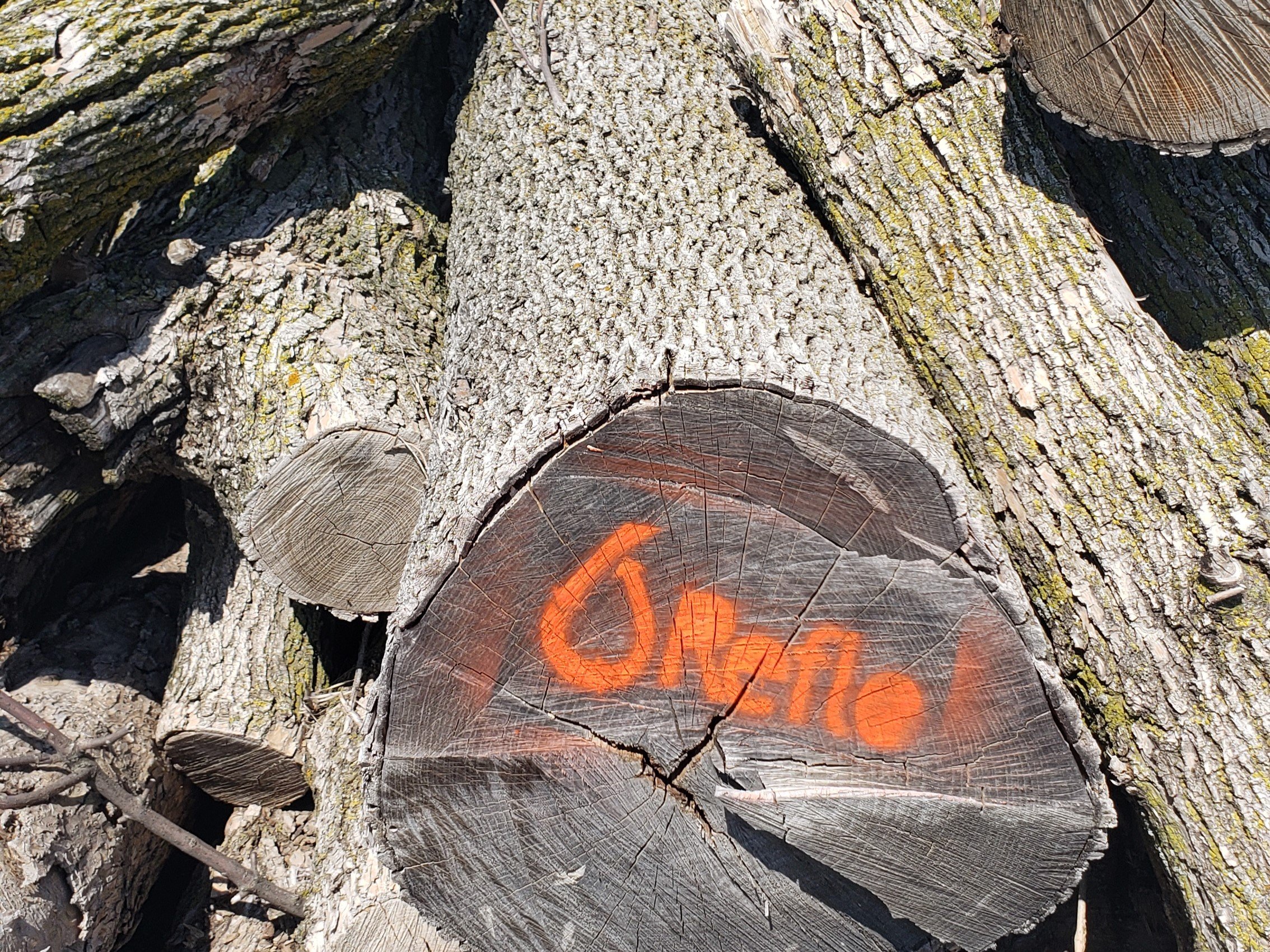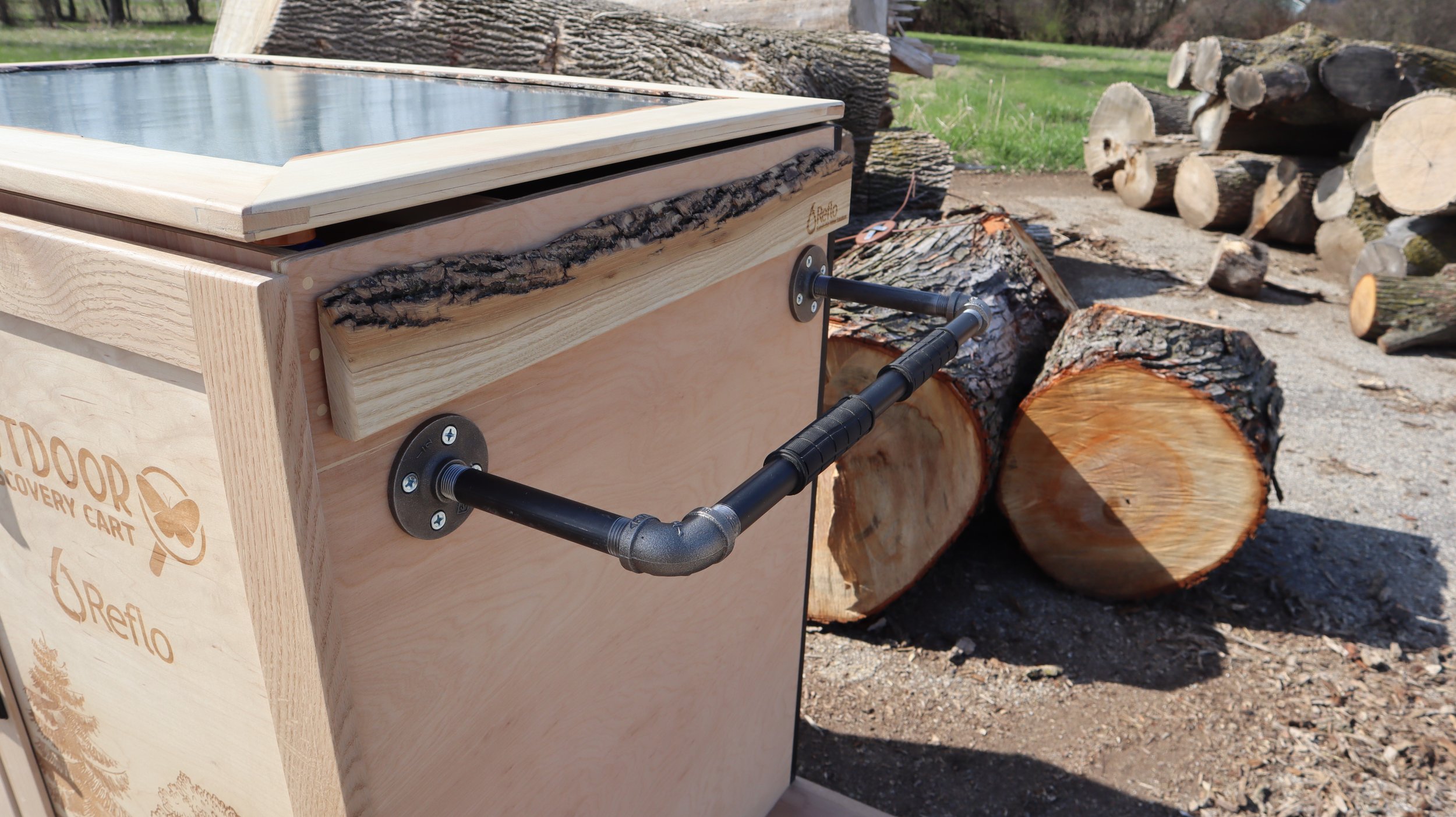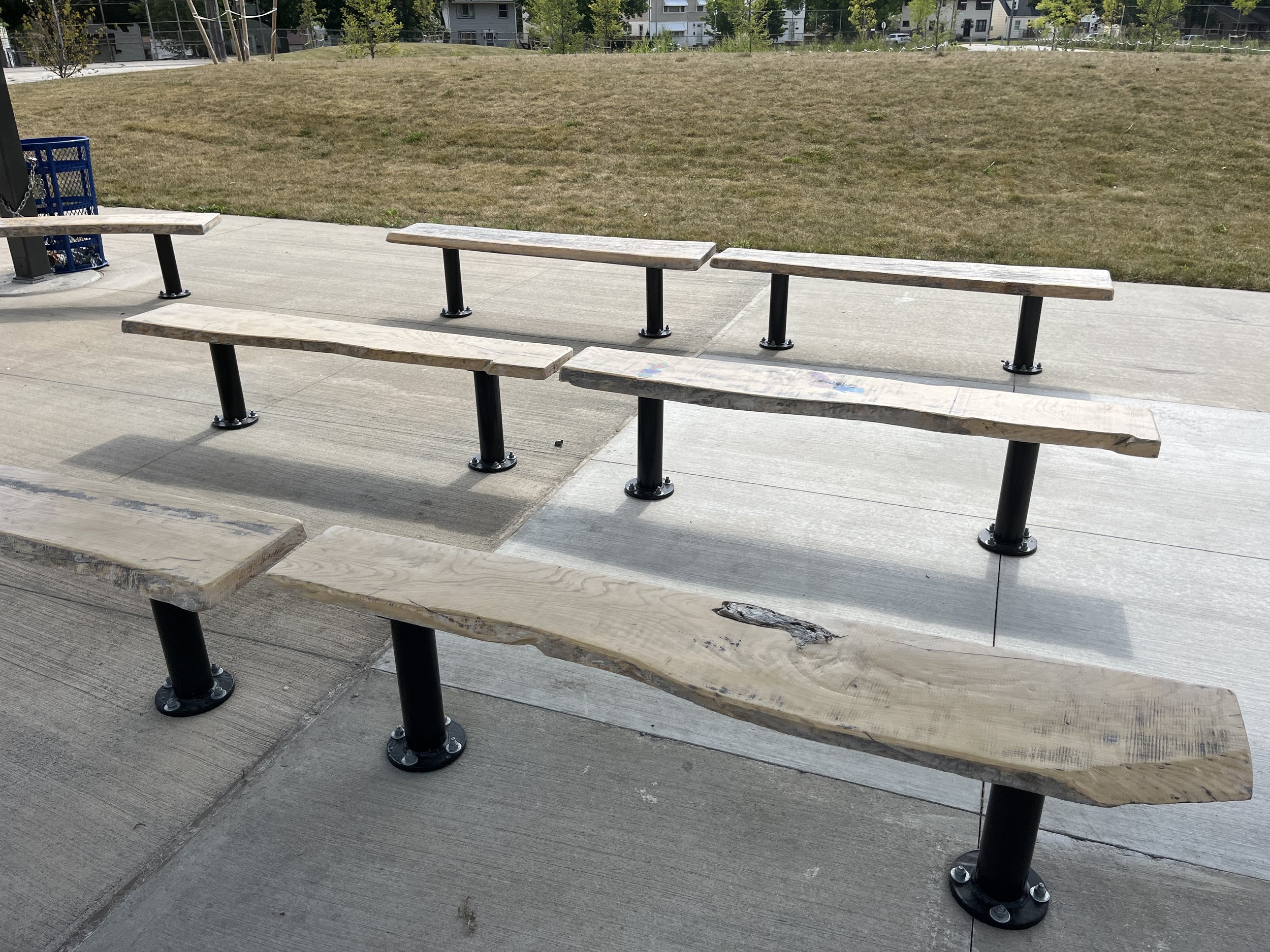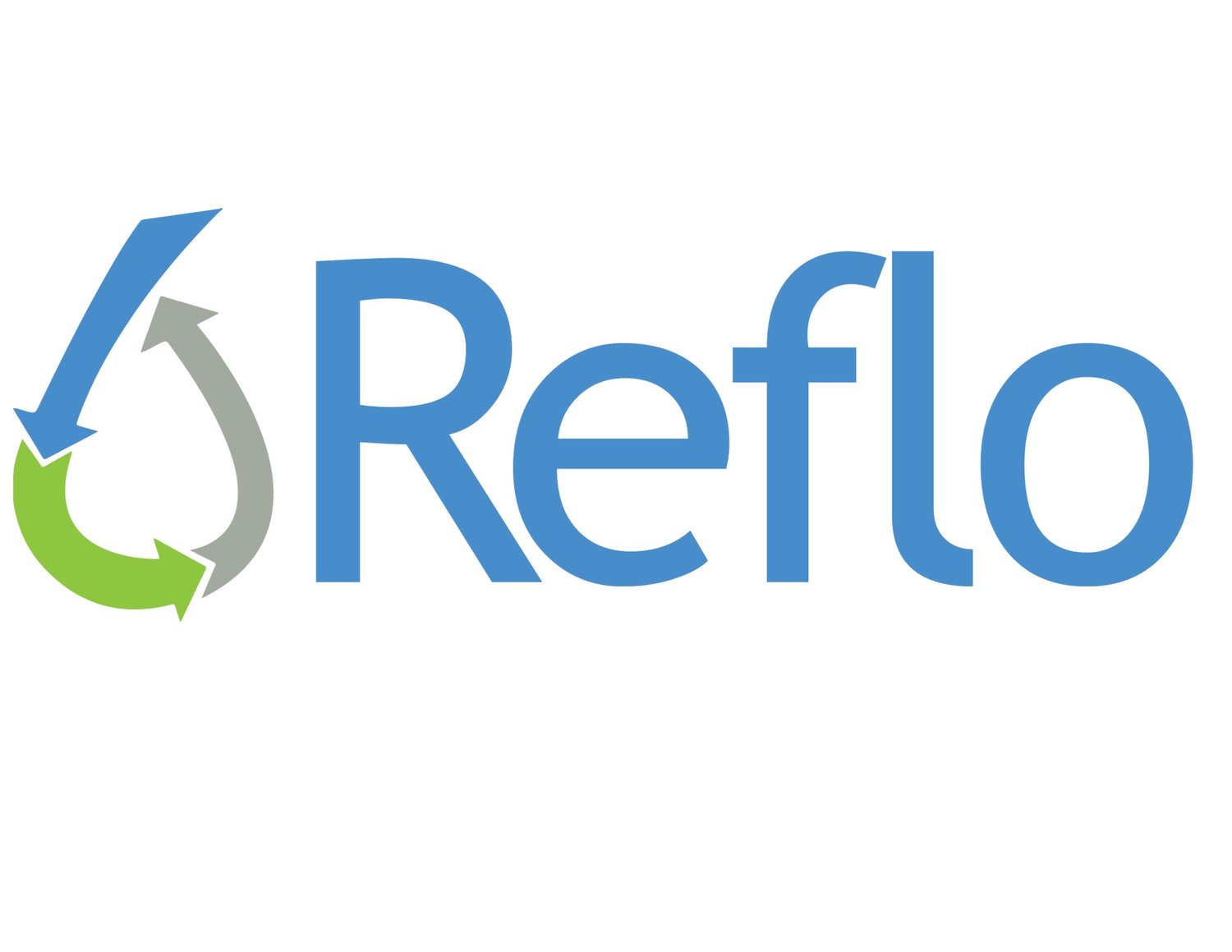Helping Bring Urban Lumber Back Home
If you’re unfamiliar with the term, ‘urban wood’ refers to lumber generated from trees that grew in a city environment. Here at Reflo, we’re doing our best to create sustainable practices in our workshop. By diverting urban wood into our projects instead of the landfill, we’re hoping to close the gap between unnecessary waste and beautiful wood products.
Urban wood presents its own set of challenges and advantages. On the upside, being able to select board stock and slabs from local trees allows our workshop manager to fine-tune the materials needed for our projects. This results in beautiful end-products with more character, quality, and TLC. The challenge is in the process. Urban wood is beautiful and sustainable, but it does take a few extra steps in the workshop to make it workable. Because it’s not milled by monster robots and pressed to look the same every time, each item selected can have its own quirky grain; its own bend or twist; maybe even its own attitude when it comes to being finished. Yet, each of these little challenges makes the end-product that much more interesting. Every item made using urban wood has a story - from the trees used to make it, to the city it was grown in - it is truly a collaborative item with a slice of Milwaukee and a healthy dose of ingenuity.
Source
Urban wood is a valuable resource from city trees, often removed due to damage or hazards. Instead of being chipped and sent to the landfill, this wood can be repurposed as lumber, reducing waste and benefiting the community.
Process
Reflo partners with local mills to turn felled trees into live-edge slabs and board stock, which are then shaped and finished at our workshop for projects like outdoor classroom seating and our Outdoor Discovery Carts.
Use
By tapping into this local resource, we not only support our mission but also bring high-quality, unique wood to schools and communities, offering a sustainable alternative to store-bought lumber.
Source
Urban forests. Urban wood. Urban lumber. ‘Urban’ is a catch-all term to describe resources gleaned from our city environment. Speaking of urban wood specifically, there is a tremendous volume of good, usable material coming from our own Milwaukee area. Typically, trees in the city that are taken down by the local municipality or property owners. Many of these trees are taken down due to deadfall, infestation, storm damage, or they’re in a hazardous location. Once the tree is felled, it can be chipped on-site, and trucked to the landfill. Sounds efficient, right?
While chipping a tree is certainly a quick way to remove it from the immediate area, it doesn’t do much to help the landfill or the community at-large. That’s where we’re hoping to bridge the gap. By using this resource instead of sending it to a landfill, the carbon footprint of that landfill is reduced ever so slightly. The lumber from the tree itself can then go on to serve innumerable purposes




Process
So, now we have a felled tree - what next? Once the tree has been felled and the limbs removed by a tree service, Reflo works with local Milwaukee partners to bring the log to a mill. Once at the mill, operators slice through the log at regular intervals to create ‘slabs’. If you’re familiar with ‘live-edge slabs’, this is where they come from! Often seen as table tops, bar tops, bench tops, and mantles, live-edge slabs are versatile surfaces and look great when finished. Reflo uses some live-edge slabs for projects like outdoor classroom seating and school signage projects.
But we’re not done yet! Once slabbed, further milling (sometimes called ‘resawing’) is completed to turn that slab into boardstock. Boardstock is a term that refers to lumber which has been milled to a specific thickness, sometimes a specific width, and usually has at least one straight(ish) edge. These boards are similar to what you might see in a big box store, with the exception that they have not been sanded on all surfaces (S4S), and they don’t always have a straight edge. Half of the lumber used by Reflo comes in this form - as mentioned, it’s not perfectly usable yet, so we move on to step three.
Finally, once the rough sawn boards are at Reflo’s workshop, continued shaping of those boards can begin. Depending on the project at hand, the boards may be planned, given a straight edge, ripped (cut the long way, from end to end), and sanded to create uniform, consistent boards. Once they’re cleaned up, they can be used on our finer finish projects, like Outdoor Discovery Carts and conference awards.
Use
Here at Reflo, urban lumber is incorporated into as many projects as possible from our STEAM shop. This includes but is not limited to: Outdoor Discovery Carts, picnic tables, outdoor classroom seating, school signage, conference awards, plaques, educational items, puzzles, mallets, and more!
Being able to tap into this amazing local resource is a great way to level-up our mission at Reflo. By using urban lumber, we can continue to tell the story of our local ecosystem - both metaphorically and literally. By using urban lumber, we not only help share the story of our local ecosystem but also make premium wood options accessible to the public. Each piece of urban wood we work with carries its own history and character, something we couldn't achieve with store-bought lumber. The quality of this wood is comparable to that of high-end suppliers, which means that wood types normally reserved for specialty items can be made available to our schools community.




















